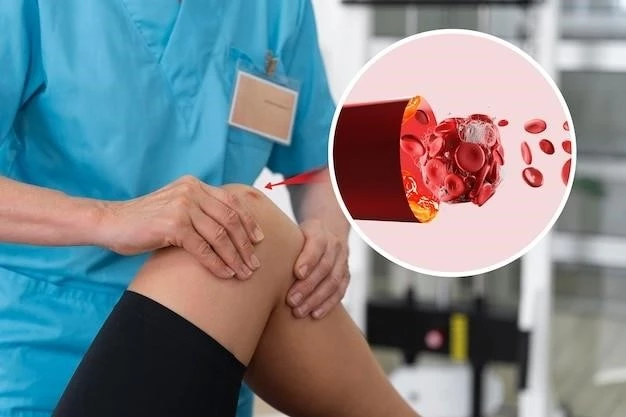Introduction to Mycosis Fungoides
Mycosis fungoides, the most common form of cutaneous T-cell lymphoma, affects the skin with different lesions․ It’s crucial to understand its nature and impact․
Definition and Overview
Mycosis fungoides, also known as Alibert-Bazin syndrome or granuloma fungoides, is the most common type of cutaneous T-cell lymphoma (CTCL)․ It primarily affects the skin, leading to various skin lesions and distinct stages of progression․
Causes and Risk Factors
The exact cause of mycosis fungoides remains unknown․ Current theories suggest potential factors like antigen persistence, retroviruses, and exposure to carcinogenic substances․
Theories on the Cause of Mycosis Fungoides
Studies suggest that mycosis fungoides may be linked to factors such as antigen persistence, retrovirus infections like HTLV-1, and exposure to potential carcinogens․ Understanding these theories is crucial for investigating the disease’s pathogenesis․
Symptoms and Clinical Presentation
Mycosis fungoides typically manifests with various skin lesions that progress through distinct stages, affecting different parts of the body․ Understanding its clinical presentation is vital for diagnosis and management․
Stages of Classic Mycosis Fungoides
Classic mycosis fungoides progresses through three main stages⁚ patch, plaque, and tumor․ These stages involve distinct skin lesions and play a crucial role in the disease’s clinical course and prognosis․
Diagnosis and Prognosis
The diagnosis of mycosis fungoides involves a combination of clinical examination, skin biopsies, and sometimes molecular studies․ Prognosis varies based on the stage and response to treatment․
Survival Rates and Disease Progression
Survival rates in mycosis fungoides vary based on the stage of the disease․ While most patients with early-stage MF have a favorable prognosis, advanced stages can be more challenging to treat, impacting overall survival rates․
Treatment Options
Treatment for mycosis fungoides includes a variety of options such as skin-directed therapies, systemic medications, radiation therapy, and even stem cell transplantation․ Each treatment approach aims to manage the disease effectively․
Current Therapies for Mycosis Fungoides
Treatment options for mycosis fungoides include skin-directed therapies like topical medications, phototherapy, systemic treatments including chemotherapy, biological agents, and immunomodulators, as well as novel approaches such as targeted therapies and clinical trials․ The choice of treatment depends on factors like disease stage, patient characteristics, and response to previous therapies․
Research and Development
Ongoing research in mycosis fungoides focuses on investigating novel treatment modalities, understanding the disease’s molecular mechanisms, and exploring potential targeted therapies․ Stay updated on the latest advancements in the field․
Recent Studies on Mycosis Fungoides
Recent studies on mycosis fungoides have explored interactions between various medications, such as GZ17-6․02 and bexarotene, to enhance the elimination of mycosis fungoides cells․ Continued research aims to improve treatment outcomes and patient care․

Complications and Associated Conditions
Complications of mycosis fungoides may include secondary infections, ulceration, and psychological distress․ Monitoring for associated conditions like folliculotropic mycosis fungoides is essential for comprehensive patient care․
Folliculotropic Mycosis Fungoides
Folliculotropic mycosis fungoides, a rare subtype of cutaneous T-cell lymphoma, involves the transformation of white blood cells due to genetic mutations, leading to the development of red patches․ Understanding this condition is crucial for accurate diagnosis and tailored treatment strategies․

Medications and Management
Effective management of mycosis fungoides often involves a combination of therapies, including medications like topical corticosteroids, chemotherapy, biological agents, retinoids, and immunomodulators․ Close monitoring and individualized treatment plans are essential for optimal patient outcomes․
Medication Options for Mycosis Fungoides
Medication options for mycosis fungoides include various topical corticosteroids, chemotherapy drugs, retinoids, immunomodulators, and biological agents․ These medications aim to manage symptoms, control disease progression, and improve the patient’s quality of life․
Conclusion
In conclusion, mycosis fungoides remains a significant challenge as the most common form of cutaneous T-cell lymphoma․ With ongoing research and a range of medication options, including topical corticosteroids, chemotherapy, and immunomodulators, the management of this condition is advancing․ Understanding the disease’s stages, complications like folliculotropic mycosis fungoides, and associated conditions is crucial for effective diagnosis and tailored treatment plans․ Continued research efforts aim to further enhance therapeutic outcomes and overall patient care in the realm of mycosis fungoides․
